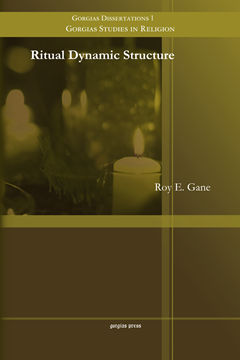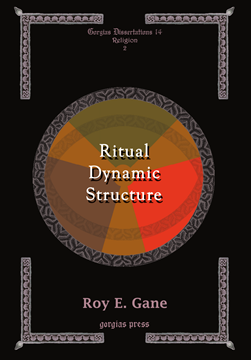Roy E. Gane
Ritual Dynamic Structure
By Roy E. Gane
Series: Gorgias Studies in Religion 1
ISBN: 978-1-4632-0400-6
The present work takes up the neglected quest for a theory of ritual and methodology of analysis that recognizes and traces the contours of ritual dynamic structure. The resulting fresh approach provides a controlled framework for interpreting rituals belonging to various cultures and for identifying bases of comparison between them. The first part builds a theory and definition of ritual and a corresponding methodology for analyzing specific rituals in terms of their activities and the meanings attached to those activities. The second part illustrates this methodology and its usefulness for comparative studies by applying it to ceremonies of cult purification in the ancient Near East.
$131.00 (USD)
Ritual Dynamic Structure
By Roy E. Gane
Series: Gorgias Studies in Religion GD 14, Religion 1
ISBN: 1-59333-229-7
The present work takes up the neglected quest for a theory of ritual and methodology of analysis that recognizes and traces the contours of ritual dynamic structure. The resulting fresh approach provides a controlled framework for interpreting rituals belonging to various cultures and for identifying bases of comparison between them. The first part of ritual dynamic structure builds a theory and definition of ritual and a corresponding methodology for analyzing specific rituals in terms of their activities and the meanings attached to those activities. The second part illustrates this methodology and its usefulness for comparative studies by applying it to ceremonies of cult purification in the ancient Near East.
$123.00 (USD) $73.80 (USD)


